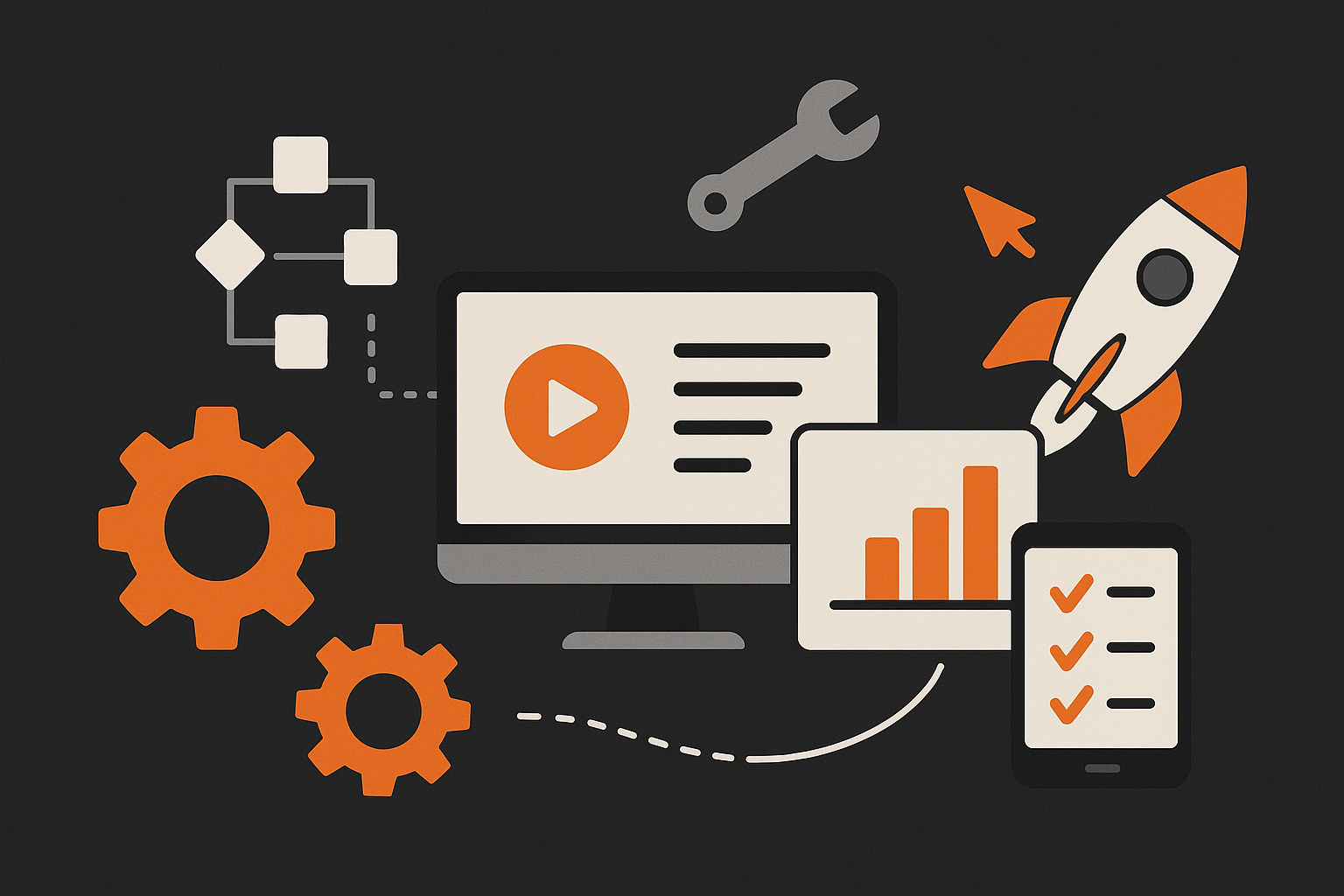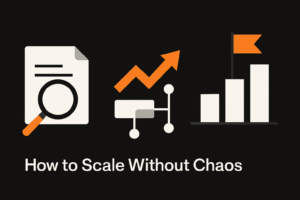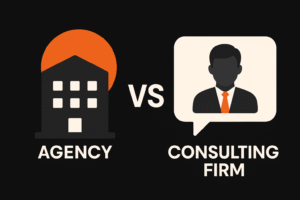Best Execution Focused Tools for Fast Results (Not Pretty Demos)

In 2025, 95% of organizations see no measurable ROI from their flashy tool investments. The problem isn’t the technology—it’s the mismatch between presentation appeal and execution reality. While businesses chase comprehensive feature lists and impressive demos, they’re hemorrhaging productivity to the tune of $8.9 trillion annually in lost engagement and wasted time.
The truth is stark: tools that look impressive in boardroom presentations often become productivity black holes once deployed. Meanwhile, simpler execution-focused alternatives deliver 50-3500% ROI, slash implementation time from months to days, and get teams productive in hours instead of weeks. For marketing professionals and business owners drowning in software complexity, understanding this distinction isn’t just helpful—it’s mission-critical.
Why execution-focused tools outperform presentation-heavy alternatives
The aesthetic-usability effect tricks decision-makers into perceiving visually appealing tools as more functional than they actually are. Research from Hitachi and subsequent studies confirm that users rate visually stunning interfaces as easier to use—even when functionality is identical or worse. This cognitive bias explains why 74% of companies struggle to achieve value from their tool investments despite choosing platforms with the most impressive demos.
The cost of this bias is staggering. 89% of IT professionals waste over 7 hours weekly managing bloated applications they were sold on visual appeal rather than execution capability. In software development alone, 23% of developer time evaporates due to technical debt from overly complex tools. Jack Welch captured the paradox perfectly: “You can’t believe how hard it is for people to be simple, how much they fear being simple. They worry that if they’re simple, people will think they’re simpleminded. In reality, it’s just the reverse.”
Execution-focused tools succeed because they solve the 90% problem extraordinarily well rather than promising 100% of everything. Linear loads in under 3 seconds compared to Notion’s sluggish performance. Railway deploys applications in 60 seconds versus 60 minutes on traditional platforms. PostHog costs 80% less than Mixpanel while delivering more functionality. These aren’t marginal improvements—they’re order-of-magnitude differences in time-to-value that compound daily.
Gartner predicts that over 40% of hyped agentic AI projects will be canceled by end of 2027 due to escalating costs and unclear business value. The pattern is consistent: presentation-heavy tools promise transformation but deliver frustration. Execution-focused tools promise to solve one problem well—and actually deliver.
The five categories of execution-focused business tools
Modern execution-focused tools cluster into five essential categories, each addressing specific friction points that slow teams down. Understanding these categories helps organizations build lean, powerful tech stacks without the bloat.
Project management that eliminates friction
Linear represents the gold standard for execution-focused project management. Built by developers frustrated with JIRA’s complexity, Linear operates 3.7x faster than JIRA and 2.3x faster than Asana for common operations. The secret: sub-100ms response times, keyboard-first navigation with comprehensive shortcuts, and optimistic UI updates that don’t wait for server confirmation. Organizations using fully integrated Linear workflows report 34% fewer status meetings and 27% improved visibility within months.
The tool’s philosophy centers on constraints that liberate rather than limit. Linear offers only four priority levels, pre-defined fields, and GitHub-style markdown. This opinionated approach prevents the analysis paralysis that plagues flexible platforms like Notion. Engineers rate Linear 4.6/5 for user experience versus JIRA’s 3.2/5, yet only 26% of cross-functional teams feel satisfied—a deliberate trade-off that prioritizes velocity for technical teams over universal appeal.
ClickUp and Monday.com serve teams wanting execution speed with more flexibility. ClickUp provides 100 monthly automations on its free plan and generous storage, replacing multiple tools at $7/user/month versus Monday’s $9. However, both introduce complexity through customization—the very trap execution-focused philosophies avoid. For teams with straightforward workflows, simpler alternatives consistently outperform these feature-rich platforms.
The key differentiator: time to first value. Linear users become productive within hours. Teams with formal onboarding report 73% faster time-to-productivity for new members. Traditional project management tools require days or weeks of configuration before delivering value—time that execution-focused teams invest in actual work.
Automation that actually automates
n8n revolutionizes automation economics with a pricing model that charges per workflow execution rather than per action step. This seemingly minor difference creates 1000x cost efficiency versus Zapier for complex workflows. The self-hosted option provides unlimited automation at zero ongoing cost, while the cloud version handles 2,500 executions monthly for $20—compared to Zapier’s steep per-task pricing that escalates rapidly.
Beyond economics, n8n eliminates the artificial constraints that cripple workflow automation. Zapier’s Code node limits executions to 30 seconds with 256MB memory and 6MB I/O restrictions. n8n removes these barriers entirely, supporting full JavaScript and Python with access to npm libraries and built-in LangChain for AI workflows. Teams report building complete AI products—chatbots, RAG systems, and autonomous agents—within n8n’s flexible architecture.
Make (formerly Integromat) bridges the gap between n8n’s developer focus and Zapier’s accessibility. With 1,500+ pre-built connectors and superior error handling (ignore, resume, rollback, commit options), Make excels at complex visual workflows that would overwhelm Zapier’s linear interface. The built-in data stores function as lightweight databases, eliminating the need for separate persistence layers.
Zapier remains unmatched for simple, non-technical automation. Its 6,000+ integration library covers virtually every business app, and pre-built automation recipes enable instant deployment. For straightforward workflows like “new Stripe payment → add to spreadsheet → send Slack notification,” Zapier’s ease outweighs its cost. The principle: match tool complexity to problem complexity, not vice versa.
Analytics that enable self-service insights
PostHog consolidates product analytics, session replay, feature flags, A/B testing, and surveys into a single platform at 80% lower cost than competitors. The business model innovation: charging primarily for identified users while treating anonymous events at a massive discount. For a company with 3 million monthly events (20% identified), PostHog costs $310/month versus Mixpanel’s $378—while providing five tools instead of one.
The technical architecture favors execution. Autocapture automatically tracks events without manual instrumentation, eliminating weeks of developer work upfront. SQL query builders enable direct data warehouse analysis without creating bottlenecks through specialized analytics teams. 90%+ of PostHog customers operate entirely on the free tier (1 million events, 5,000 recordings monthly), demonstrating that execution-focused pricing models align vendor and customer incentives.
Mixpanel and Amplitude serve organizations prioritizing analytics depth over breadth. Mixpanel’s interface “blows every other option out of the water” according to users, with collaborative boards combining reports, text, videos, and GIFs. Automated anomaly alerts catch metric changes without constant monitoring. However, Mixpanel deprecated features like data pipelines and connectors to sharpen its focus—a deliberate simplification strategy that execution-focused companies appreciate.
The hidden ROI: eliminating the data analyst bottleneck. Traditional BI tools (Tableau, Power BI) require IT expertise for setup and maintenance, creating ticket queues that slow decision-making. Self-service analytics platforms enable marketers, product managers, and executives to answer their own questions in minutes rather than days. NBCUniversal specifically cited reduced requests to data teams as a key Amplitude benefit.
Communication optimized for async execution
Loom transforms communication economics by replacing 30-minute meetings with 5-minute videos. The value proposition is simple: record screen plus face and voice instantly, with automatic cloud storage and direct sharing. No uploading, no file management, no scheduling conflicts across time zones. Marketing teams use Loom for design feedback, developers for bug reports with visual context, and executives for company-wide updates that employees consume on their own schedule.
The execution advantage compounds for distributed teams. Synchronous communication forces the lowest common denominator of timing. A quick question that would take 30 seconds in person becomes a 30-minute meeting when calendars don’t align until next week. Loom recaptures this lost time while adding the nuance of facial expression and tone that text-based async communication lacks. Pricing starts at $12.50/user/month for the Starter plan, with meaningful value delivered on the free tier.
Slack and Discord represent complementary approaches to team communication. Slack’s 2,500+ app integrations and business-focused workflows make it the standard for companies prioritizing tool consolidation. Discord excels at always-on voice channels enabling instant audio connection—perfect for remote coworking. The surprising finding: many teams successfully deploy both, using Discord for spontaneous voice collaboration and Slack for structured communication and integrations. The cost of context switching between tools is lower than the cost of forcing unsuitable tools onto use cases they don’t serve well.
Development infrastructure that removes deployment friction
Railway and Vercel exemplify the “git push to deploy” philosophy that eliminates traditional DevOps overhead. Railway deploys applications from GitHub or Docker in 60 seconds with automatic database provisioning (Postgres, MySQL, Redis, MongoDB). Users report “deployed in 60 seconds vs 60 minutes on AWS” with sub-minute support response times. The serverless pricing model charges only for active compute time, with automatic sleep after 10 minutes of inactivity eliminating waste.
Vercel optimizes specifically for frontend applications with Next.js at its core (as the framework’s creator). Zero-config infrastructure, automatic preview environments for every pull request, and global CDN distribution deliver exceptional frontend performance. The constraints are deliberate: 4GB memory limit, 800-second execution time cap, and 250MB size limit after compression. These limits push complex backend workloads toward platforms like Railway while keeping frontend deployments blazingly fast.
The strategic insight: infrastructure shouldn’t require infrastructure. Traditional cloud platforms (AWS, GCP, Azure) offer infinite flexibility at the cost of infinite complexity. Developers spend more time managing infrastructure than building products. Railway and Vercel abstract away configuration details, enabling developers to focus exclusively on application code. The trade-off—less control for more speed—aligns perfectly with execution-focused philosophies.
Real ROI: What execution-focused tools deliver
Hard data demolishes the myth that simple tools can’t handle serious work. Hack Reactor reduced operational costs by 50% and eliminated recruiting expenses entirely after switching from email chaos to Asana’s structured approach. Workday’s legal team achieved 3,500% ROI implementing Evisort’s contract automation, saving hundreds of thousands of hours on large-scale projects.
ROI Revolution cut meetings in half while getting “vastly better results with more work completed faster” after implementing Wrike. The CEO emphasized that Wrike addressed his “dream list” for task management, highlighting how execution-focused selection criteria (workflow organization, task breakdown, team visibility) outperform feature checklists.
Time-savings data tells a consistent story. Softchoice achieved 97% reduction in time spent summarizing technical meetings and 70% less time on content creation using Microsoft 365 Copilot. Newman’s Own saved 70 hours monthly on industry news summaries and 50 hours monthly on marketing briefs. Milpark Education cut average resolution time by 50% and escalation time by over 30% within four months.
The pattern extends across company sizes. Twinkle Twinkle Little One boutique increased revenue 80% year-over-year by migrating to Shopify POS, eliminating the manual inventory cross-referencing that consumed hours and created stockout issues. Handled scaled from zero to 121 locations in 18 months by streamlining hundreds of workflows through HubSpot automation.
Your Therapy Source generated 2000% ROI from basic marketing automation—abandoned cart emails alone drove 30% of all automation revenue. Rozum Robotics cut time spent finding relevant media sources by 70% using Awario’s simplified brand monitoring, while defining two new target audiences and improving lead quality.
The macro statistics validate individual case studies. Organizations using project management methodology are 28x more cost-effective according to the Project Management Institute. Process optimization delivers 40-60% reduction in task completion time and 50% reduction in errors. Companies with AI-led processes (built on execution-focused automation tools) enjoy 2.5x higher revenue growth and 2.4x productivity gains versus peers.
Why flashy tools consistently fail to deliver
Eighty percent of flashy AI tools never scale beyond proof-of-concept because they require perfect data, seamless integration, and behavior change all at once. When any piece fails, the whole system collapses. AI CRMs can’t sync with legacy customer data, forcing months of data cleanup. Project bots break on edge cases, pushing teams back to familiar workflows. Forecasting tools lose trust after making bad predictions. Each failure reinforces that “boring beats brilliant” when boring means reliable and reliable means ROI.
Feature bloat transforms solutions into problems. ClickUp and Notion offer unlimited customization, enabling teams to do five things “okay” instead of one thing exceptionally well. The setup curve extends for hours or days as teams configure workflows, custom fields, and automations. Then, as Cody McLain observes, “We are quick to try out the latest focus or task software, yet we skip over the method and the ideology required to make it work for us and not against us.” Tools fail because of low user commitment and lack of underlying frameworks—not technical deficiencies.
Complexity increases at 7% annually in large organizations according to Heidrick & Struggles research. The consequences are severe: employees in complex organizations are 3x more likely to be disengaged, and 94% of executives in companies with $5+ billion in sales blame internal complexity—not competitive threats—for growth limitations. Tools selected for comprehensiveness contribute to this complexity rather than solving it.
The productivity paradox: 23% of developer time is wasted due to technical debt from overly complex tools. 89% of IT professionals waste 7+ hours weekly managing bloated applications. Yet companies continue purchasing based on feature lists and demo impressions, ignoring the cognitive bias research proving that aesthetic designs are perceived as more functional than they are.
Gartner’s prediction crystallizes the trend: over 40% of agentic AI projects will be canceled by end of 2027 due to escalating costs, unclear business value, and inadequate risk controls. Anushree Verma, Senior Director Analyst at Gartner, warns: “Most agentic AI projects right now are early stage experiments driven by hype and are often misapplied. This can blind organizations to the real cost and complexity of deploying AI agents at scale.”
Implementation strategy: From selection to adoption
Start with the 90% solution approach—aim for good enough rather than perfect. Launch with core features only, iterate based on real usage, and avoid customization paralysis. The constraint liberates: when tools do one thing exceptionally well, teams learn them quickly and extract value immediately.
Conduct upfront analysis before purchasing. Define clear success metrics answering “what tangible improvements will we measure?” Gather requirements across business units, map workflows and pain points, and calculate true Total Cost of Ownership including implementation time. Run pilot studies with actual users and real data—not sales demos with sanitized scenarios.
The selection framework prioritizes four factors in order: speed of value delivery, ease of adoption, integration capabilities, and scalability within constraints. Red flags include “demo-driven” decisions without real-world testing, choosing based on feature lists versus fit, ignoring performance metrics, and not testing with actual end users.
Involve users early and start simple. Include engineers, marketers, and operations staff from the outset. The best solution emerges from critical insights across roles, and co-ownership prevents “surprise projects” that face resistance. Begin with basic workflows, add complexity only when needed, and measure adoption metrics obsessively. Track actual usage rates, time-to-first-value, and user satisfaction regularly—not vanity metrics like features enabled.
Execute change management through the ADKAR model: Awareness of the need for change (communicate specific pain points with data), Desire to support change (connect to personal benefits and address status concerns), Knowledge of how to change (hands-on training with real scenarios), Ability to implement (remove barriers and enable practice), and Reinforcement to sustain change (celebrate adoption metrics and address issues quickly).
Resistance management follows predictable patterns. For “that’s great, but…” resisters, acknowledge concerns and show workarounds while redirecting to the 90% solution mindset. For silent resisters who simply don’t use the tool, conduct private 1-on-1 conversations to understand actual blockers and provide customized coaching. For vocal opponents, engage them as problem-solvers by asking “what would make this work for you?” and giving them special roles in testing and feedback.
The execution timeline spans three phases: Assessment (month 1: survey team pain points, measure time spent in each tool, identify workflow bottlenecks, test alternatives), Pilot (month 2: run parallel pilot with 20% of team, measure productivity impact, gather weekly feedback, iterate on workflows), and Rollout (month 3: present data-driven recommendation, execute change management plan, full migration with support, track metrics continuously).
How marketing agencies should evaluate and implement execution tools
Marketing agencies face unique constraints: managing multiple client projects simultaneously, showing value to clients regularly, accurate billing tied to time tracking, and remote team coordination. Traditional project management tools often over-engineer for these specific needs.
The recommended marketing agency stack prioritizes client visibility and time tracking. For project management, monday.com serves agencies well with visual boards, one-click service deployment, and built-in Sales CRM used by Hulu, BBC Studios, Coca-Cola, and L’Oréal Paris. Alternative options include Teamwork (built specifically for agencies with robust time tracking) or Productive (all-in-one for marketing operations including financial management).
For marketing automation, simplicity beats sophistication. Your Therapy Source achieved 2000% ROI from basic ActiveCampaign automations—abandoned cart emails alone generated 30% of automation revenue. Marketing agencies should focus on reliable execution of core workflows (lead capture, nurturing, client reporting) rather than complex AI-driven tools that require extensive setup.
Content creation and feedback loops benefit enormously from Loom. Record design presentations, campaign walkthroughs, and creative feedback asynchronously, eliminating the calendar chaos of coordinating client and team schedules. One 5-minute Loom video replaces three email threads and a 30-minute meeting, while providing the personal touch that strengthens client relationships.
Analytics should empower account managers, not bottleneck through specialists. PostHog or Mixpanel enable client-facing teams to pull campaign data, create dashboards, and answer questions without waiting for analysts. The self-service capability transforms client relationships from periodic reports to real-time collaboration.
The strategic approach: build a lean stack of specialized tools rather than one comprehensive platform. The Climate Policy Radar team exemplifies this philosophy: “All actions in Linear, all notes in Notion.” Clear boundaries prevent confusion, and best-of-breed tools in each category outperform all-in-one solutions trying to do everything adequately.
The decisive advantage of shipping over showing
Steve Jobs articulated the principle simply: “You’ve got to start with the customer experience and work back toward the technology—not the other way around.” Execution-focused tools embody this philosophy by optimizing for user outcomes rather than feature lists. Linear’s speed enables developers to capture thoughts instantly before they evaporate. Railway’s 60-second deployments transform CI/CD from bottleneck to invisible infrastructure. PostHog’s autocapture eliminates weeks of instrumentation before delivering insights.
Reid Hoffman’s advice captures the execution mindset: “If you are not embarrassed by the first version of your product, you’ve launched too late.” This applies equally to internal tools. The team using Linear with basic workflows today captures more value than the team spending three months configuring Notion’s infinite flexibility. Imperfect execution beats perfect planning.
The data is unambiguous. Organizations achieve 28x cost-effectiveness with structured execution tools. Implementation of simpler tools delivers 50-97% reduction in specific task times. The productivity boost from developers using focused tools reaches 58% increase in coding time (from 4.3 to 6.8 productive hours daily). Companies switching from complex to simple tools report 34% fewer status meetings and 27% improved visibility.
For marketing agencies and business owners, the strategic imperative is clear: audit your current tool stack for execution friction. Are you spending more time managing productivity tools than being productive? Does tool sluggishness cause teams to skip documentation, creating information gaps? Did that impressive demo translate to actual daily value?
The alternative exists. Linear over JIRA. Loom over PowerPoint. Railway over AWS. PostHog over enterprise analytics. n8n over Zapier at scale. Each comparison reveals the same pattern: constraints that liberate, simplicity that scales, and boring reliability that generates extraordinary ROI.
The best execution-focused tool is the one that disappears into your workflow, enabling work rather than managing meta-work. Start simple. Ship fast. Measure ruthlessly. Execution beats presentation every time.
Transform your execution with expert guidance
Selecting and implementing the right tools requires strategic insight and technical expertise. Our agency specializes in helping marketing teams and businesses cut through the hype to build lean, powerful tech stacks that deliver measurable ROI. We’ve guided dozens of companies through successful transitions from bloated platforms to execution-focused tools, typically achieving productivity improvements of 40-60% within three months.
Ready to audit your current tools and identify execution gaps? We offer complimentary stack assessments that map your workflows, measure hidden friction costs, and recommend specific tools with implementation roadmaps. Our proven methodology ensures your team adopts new tools rapidly while maintaining business continuity.
Contact us today to schedule your execution-focused tools assessment. Let’s turn your productivity stack from a presentation slide into a competitive advantage.
READY TO
EXECUTE?
Stop reading about strategy. Start executing it with consultants who deliver results.
30 DAYS FREE · NO CONTRACTS · GUARANTEED RESULTS


